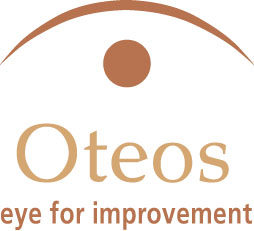Want more productivity from your employees? Read this…

Multiple things influence productivity on the work floor. While there are external factors that are beyond the company’s control, there are many internal factors that can be manipulated on the personal and organizational levels. It is often thought that the internal factors affecting productivity rest solely on the shoulders of the employees. In fact, management has a more significant impact due to their influence on their teams.
Employee Health
Investing in employee health results in staff that come to work mentally and physically prepared with an increased stamina and focus. Regular exercise gets the blood pumping, increases oxygenation to the brain, and helps clear the mind. Employees who exercise regularly will be healthier, more efficient, and in the end, more productive. Investing in an employee wellness program is something every organization should aspire to.
Environment
In addition to encouraging personal health, the organization needs to provide a healthy environment. Having a workspace with proper ergonomics will keep attitudes more positive, and people focused on work instead of aches and pains from a poorly arranged environment. The short-term investment of a proper ergonomic assessment will pay off in the long run with decreased time away from work to manage neck, back or shoulder problems, fewer WCB claims, and overall healthier employees.
Temperature is a factor that contributes significantly to productivity. If the staff is too cold, they will spend time trying to get warm. Conversely, if the staff is too warm, they are sluggish. Either way, temperature affects productivity. The perfect temperature for the office environment is between 60-70 Fahrenheit or 15.5-21 Celsius. Something to keep in mind, but out of our control, is the outdoor environment. Employees are likely to be more productive on bright, sunny days versus dreary, dull days.
Listening to music may also have a profound effect on productivity. Music has been shown to improve mood, focus, and endurance. Playing music in the background may significantly improve productivity. Beware, however, if someone doesn’t usually listen to music, it may hinder their productivity.
Training, Equipment, and Systems
Regardless of their position within the company, all staff will benefit from training of some sort. Whether it is initial training to ensure they can do their job or ongoing training, employees must be encouraged to continue their professional and personal development.
A major factor in productivity is ensuring that the employee has the proper training and tools for the job. Nothing is more frustrating than performing a task with the wrong tool. Whatever the business, there are tools customized to the organization to reduce waste and increase productivity. Even when trying to cut costs and maintain overhead, there is a point that some investment is necessary. The cost of equipment upgrades will outweigh the loss of productivity due to substandard equipment.
Even with the right equipment in place, productivity can be stifled by inefficient workflow processes. It’s important to review processes from time to time and change them as needed. Ask for and reward employee input on a regular basis. They often will have creative ways to improve workflow and productivity.
Employee Satisfaction
When employees are no longer engaged at work, their productivity declines. Likewise, employees that are passionate about their job will work to their full potential. Therefore, organizations that want to optimize productivity need to focus on employee satisfaction. This is truly the core of Oteos. Happy employees equal increased productivity resulting in happy customers, regardless of the nature of the organization. Developing relationships, providing an ideal work environment, encouraging professional and personal growth, autonomy and empowerment and open, two-way communication are all methods of improving employee engagement.
In summary, if productivity remains the goal, then it is necessary to identify the factors that are affecting it. It starts at the hiring process, and the expectations remain for the term of employment. That said, it is the organization’s responsibility to provide the right tools and environment to facilitate a continually improving rate of productivity and efficiency.
I challenge you to identify areas of improvement in your organization. What can you do to boost productivity?



